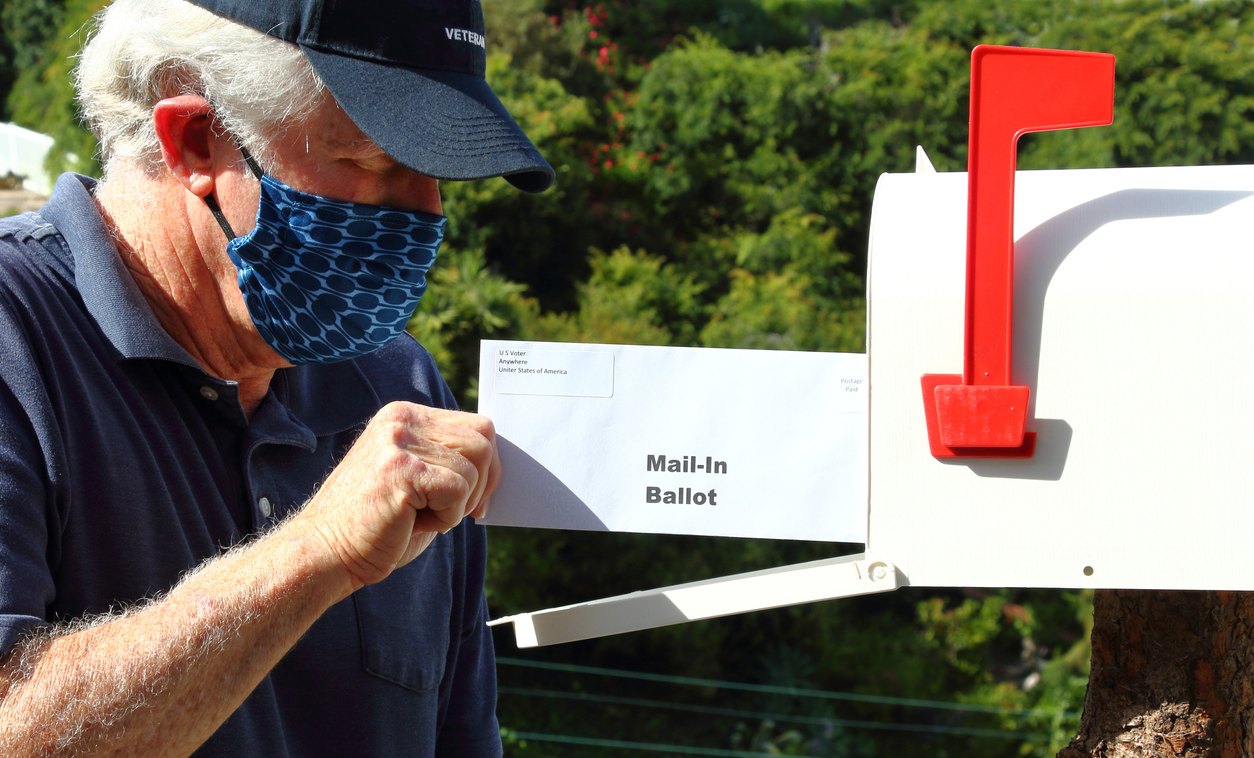Voter Suppression: Truth That’s Stranger Than Fiction

Some days I shake my head in near-disbelief at the news. Frequently, the phrase “truth is stranger than fiction” comes to mind.
“’Tis strange but true; for truth is always strange;
Stranger than fiction; if it could be told,
How much would novels gain by the exchange!
How differently the world would men behold!
How oft would vice and virtue places change!
The new world would be nothing to the old,
If some Columbus of the moral seas
Would show mankind their souls’ antipodes.”
—Lord Byron, Don Juan, Canto the Fourteenth, Verse 101
I admit, I needed to do a quick Google check on the last word in the passage—antipodes. It means the opposite of something and the example given was this: “Voting and violence are antipodes.” What a coincidence! Voting, friends, is where I was going with all of this!
I cannot fathom the fear—for that’s exactly what is is—that prompts an elected official to limit the popular vote. And I never thought I would see the day when our ability to vote would be threatened due to potential closure of the United States Postal Service. The threat became very real when journalists started filming the actual removal of blue USPS mailboxes in some places, including Oregon.
Voting is a sacred act for many of us. I remember feeling a touch of loss when we went to all-mail-in balloting in Washington state; however, the loss of tradition—completing my ballot on election day at my neighborhood polling place—was balanced by the knowledge that more people would be able to vote, and that’s a very good thing.
Postage-paid return envelopes were the clincher. Every registered voter in Washington state has the ability to vote as soon as they receive their ballot (usually mailed to their registration address three weeks in advance of the election). And frankly, it only takes a few minutes to complete the ballot. Best of all, it can be returned at no cost.
But what if funds are cut to the extent that your ballot doesn’t arrive at your home in a timely manner, or your completed ballot doesn’t get postmarked by election day, if at all? We cannot let that happen!
Voter fraud is a fabrication meant to scare you
There is very little evidence to back up any claim that mailed ballots are corrupt. See information published by the Bipartisan Policy Center, FactCheck.org, CNN, PBS, Snopes, and Washington Post, to name a few of many online sources.
What IS scary is elected leaders who threaten our most fundamental right as citizens of the United States—voting—as well as our ability to conduct business (e.g., pay bills, receive mail orders, including prescriptions, and so much more) and stay in touch with loved ones without using a phone or computer.
Voter suppression isn’t new
“Vote Like Lives Depend on It,” an article by ADS director Cathy Knight published in AgeWise King County two months ago, describes how fortunate Washington state residents have been in regards to voter registration and mail-in balloting. Her article mentions several states that have not been so fortunate, with suppressed voter registration and turnout, particularly among people of color. Cathy wrote, “Onerous registration requirements, no mail-in ballots, insufficient polling places, threats, and intimidation—I find this behavior appalling.” I agree!
Watch a video about the ongoing fight to overcome voter suppression and read in Timeline: Voter suppression in the US from the Civil War to today (ABC News). Learn more about The 15th Amendment to the United States Constitution (National Geographic), passed just over 150 years ago, granting African American men the right to vote. Learn more about the 19th Amendment (History.com) that gave women the right to vote in 1920 (white women, that is).
Did you know that, until 1952, federal policy barred immigrants of Asian descent from becoming U.S. citizens and having access to the vote? Read more in 50 Years of the Voting Rights Act: An Asian American Perspective (Asian Americans Advancing Justice). Did you know that Native Americans Weren’t Guaranteed the Right to Vote in Every State Until 1962 (History.com)?
Now learn why the Voting Rights Act of 1965 (History.com) was necessary to overcome state and local laws that prevented African Americans from voting.
But wait—there’s more! Learn why the U.S. Senate still needs to pass the John Lewis Voting Rights Advancement Act of 2020 in order to protect voting rights of people of color, older people, low-income people, LGBTQ people, and people with disabilities in some states. There are both legal and political barriers to full voting rights for way too many people in this country. The threat of underfunding the postal service so it cannot deliver ballots is part of an ugly, ongoing history of voter suppression in this country.
What’s a voter to do?
You’ve probably heard the adage, “Vote early and often!” If you interpret that as I do, you will vote early and as often as there is an election. Vote early in every election—as soon as possible after you receive your ballot. If you have to mail it back, allow at least a week and preferably two weeks.
If you can deliver your ballot to a King County Elections 24-hour ballot drop box, that’s even better. The boxes open approximately October 13 and close at 8 p.m. on General Election Day, which is Tuesday, November 3, 2020. If you live elsewhere in Washington state, contact your county auditor’s office as soon as possible to determine where your ballot can be dropped off in advance of election day.
The Washington State Attorney General is leading a coalition of states that has brought a lawsuit against the federal government to protect the mail service. I hope and pray that by the time you read this article, this issue has been put to rest, with sufficient USPS funding, not only for elections but in perpetuity.
 Contributor Ava Frisinger chairs the Seattle-King County Advisory Council on Aging & Disability Services, which publishes AgeWise King County. She welcomes input from readers via e-mail (advisorychair@agewisekingcounty.org) as well as applicants for open positions on the council. For more information, visit www.agingkingcounty.org/advisory-council.
Contributor Ava Frisinger chairs the Seattle-King County Advisory Council on Aging & Disability Services, which publishes AgeWise King County. She welcomes input from readers via e-mail (advisorychair@agewisekingcounty.org) as well as applicants for open positions on the council. For more information, visit www.agingkingcounty.org/advisory-council.
This article originally appeared in the September 2020 issue of AgeWise King County.
![Aging & Disability Services for Seattle & King County [logo]](https://www.agingkingcounty.org/wp-content/themes/sads/images/seattle-ads-logo.png)